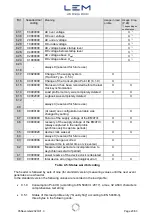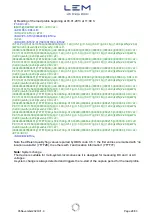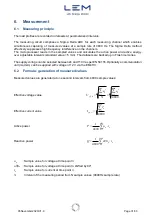
05November2020/V1.0
Page 29/33
5) Reading of a single register (1.8.0 as example):
/?!<CR><LF>
/EMH5\@D4EM4TIIW001--<CR><LF>
<ACK>051<CR><LF>
<SOH>P0<STX>()<ETX>`
<SOH>P1<STX>(00000000)<ETX>a
<ACK>
<SOH>R5<STX>0:1.8.0()<ETX>^
<STX>0:1.8.0(0955760.30*kWh)<ETX>P
<SOH>B0<ETX>q
6) Reading of the time with 0.9.1 command:
/?!<CR><LF>
/EMH5\@D4EM4TIIW001--<CR><LF>
<ACK>051<CR><LF>
<SOH>P0<STX>()<ETX>`
<SOH>P1<STX>(00000000)<ETX>a
<ACK>
<SOH>R5<STX>0.9.1()<ETX>_
<STX>0.9.1(104106)<ETX>8
<SOH>B0<ETX>q
4.3
Data input for GPS receiver connection
The is equipped optionally with a dedicated serial input (RS232 type) to be connected to a
GPS receiver system. The output signal of this interface (TX) is not used and can be left unconnected.
On this interface, an RMC (Recommended Minimum Sentence C) data set according to NMEA 0183
sent with 4800 Baud is expected by the every second or 2 seconds (max).
The location information contained in these GPS data sets are used in the formation of the load
profile. The input format of coordinates according to NMEA0183 is still accepted with the old format
“DDMM.XXXX”
The evaluates from the GPS receiver the dataset “$GPRMC” entities only.
Other datasets are ignored. Nevertheless, other datasets should be limited to avoid a buffer overflow.
A data connection with 4800 Baud can transfer 480 characters per second. If possible, avoid sending
more than 240 characters per second.
The time information included in the GPS signal is used for automatically synchronization of the
built-in real time clock.





































